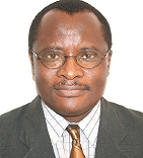Accuracy of Birth Weight Estimation by Clinical and Ultrasound Methods Among Term Pregnant Women at A District Hospital in Abuja, Nigeria.
Keywords:
accuracy, actual birth weight, Dare’s method, fetal weight estimation, Hadlock-4 equationAbstract
Background: Fetal weight estimation is an important component of maternity care. It is often estimated or predicted based on maternal parameters and fetal biometry, either clinically or with the aid of ultrasonography. Accurately estimating fetal weight is important for clinical concerns and safeguards from avoidable litigations.
Objective: This study aimed to compare the accuracy of clinical and ultrasound estimation of fetal weight at term using actual birth weight as the baseline.
Methodology: This was a cross-sectional comparative study in Asokoro District Hospital, Abuja. A clinically (Dare’s method) estimated fetal weight was carried out, after which an ultrasound estimated (Hadlock-4 equation) fetal weight was performed. The actual birth weight was measured immediately after delivery. The estimated fetal weights were compared with the actual birth weight using standard accuracy measures. Data analysis was performed using IBM SPSS version 23.
Results: The result of this study showed that there was no significant difference between the mean absolute percentage errors for the two methods of birth weight estimation at term (6.5 ± 5.94 vs. 5.4 ± 4.14, for Dare’s clinical method and Hadlock-4 ultrasound, respectively, p=0.057). Both methods showed a strong positive linear correlation with actual birth weight (correlation coefficient 0.909 vs. 0.904, for Dare’s formula vs. Hadlock-4 respectively).
Conclusion: There is no significant difference between the accuracy of birth weight estimation using Dare’s method and ultrasound scan (Hadlock-4). Therefore, both methods can be used according to the obstetrician’s preferences and available resources.
Keywords: accuracy, actual birth weight, Dare’s method, fetal weight estimation, Hadlock-4 equation













.png)

